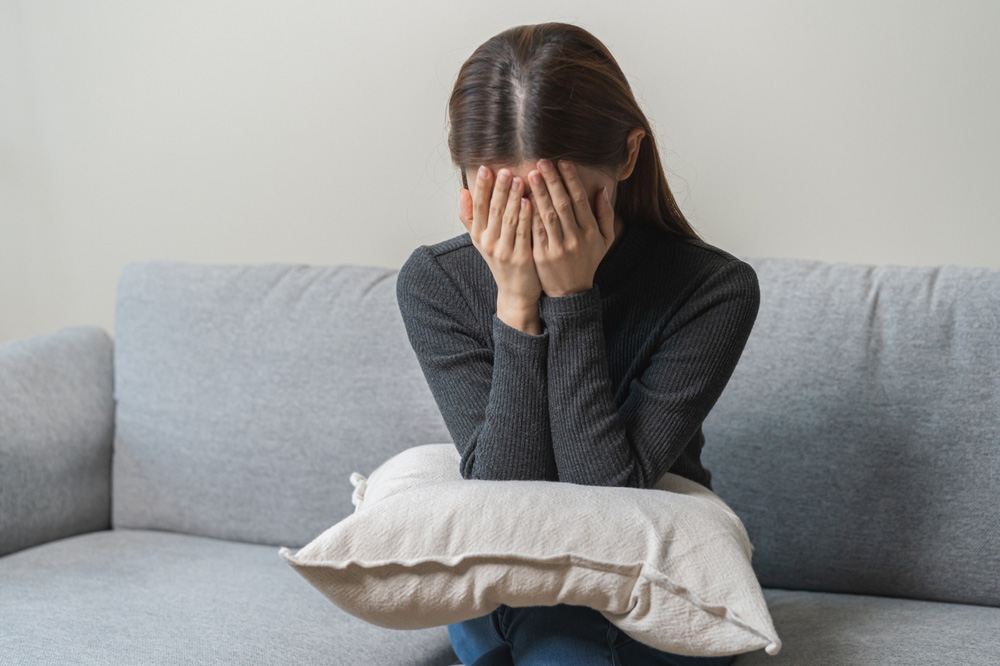Grief Doesn’t End — It Evolves: Navigating Loss and Mental Health

By Laila Al Akel
Medical student at Balamand University
When Loss Breaks the Silence: What Grief Really Is
Grief is more than just sadness. It is the intense emotional suffering that comes with loss—whether that’s the death of a loved one, the end of a relationship, a lost identity, or even the collapse of a dream. While most associate grief with bereavement, it can also stem from remorse, regret, or sudden life changes. Grief doesn’t just affect the heart; it leaves its fingerprints on the mind, body, and spirit. It’s an experience that shakes our sense of self, our future, and our place in the world.
Grief Is Not Linear: The Evolving Stages
You may have heard of the “Five Stages of Grief” that include:
- Denial: Feeling emotionally numb or detached, as if nothing has changed.
- Anger: Lashing out or feeling resentful at the world, others, or even the person lost.
- Bargaining: Making internal deals with yourself or a higher power, hoping to undo the pain.
- Depression: Deep sorrow, hopelessness, or a sense of emptiness.
- Acceptance: A gradual acknowledgment of the loss and learning how to live with it.
These stages are not a checklist or a linear process. People may cycle through them repeatedly, skip some entirely, or experience them in a different order. Each loss and each person’s journey through grief is uniquely their own.
The Many Faces of Grief
Grief doesn’t look the same for everyone. Here are different forms it can take:
- Uncomplicated Grief: Intense sadness that naturally fades with time, usually within six months.
- Anticipatory Grief: Grieving a loss before it actually happens, often during terminal illness.
- Inhibited Grief: Suppressing feelings of grief, which may later manifest as physical symptoms.
- Complicated Grief (Prolonged Grief Disorder): When grief doesn’t ease over time and interferes with everyday life. This must be distinguished from depression or PTSD and may require professional help.
- Delayed Grief: When grief is postponed due to shock or distraction and resurfaces later.
- Absent Grief: No outward signs of grief, though internal processing may still be happening.
- Cumulative Grief: When multiple losses happen at once or close together, compounding the emotional weight.
- Traumatic Grief: A loss so distressing it makes daily life difficult and clouds memories of the person who died. In children, it’s called Childhood Traumatic Grief.
- Collective Grief: Shared grief felt by a community or society, such as after natural disasters or tragic events.
How Grief Manifests: The Mind-Body Connection
Physical Symptoms:
- Exhaustion or low energy
- Headaches, nausea, and joint pain
- Sleep disturbances
- Appetite changes
- Chest tightness or digestive issues
Emotional Reactions:
- Sudden waves of sadness or anger
- Relief mixed with guilt
- Conflicting feelings in complex relationships
- Emotional numbness
Mental Health Challenges:
- Difficulty focusing or making decisions
- Agitation or irritability
- Feeling hopeless or disinterested in life
- Becoming socially withdrawn
- In extreme cases, thoughts of self-harm or suicide
Grief and Culture: No One-Size-Fits-All
How we grieve is deeply influenced by our culture, religion, upbringing, and personality. While some cultures express grief openly and communally, others value privacy and stoicism. No approach is right or wrong.
Comparing your grief to someone else’s may only deepen your suffering. Mourning rituals may look different, but the pain of loss is universally human. Grief has many languages—tears, silence, prayer, storytelling, or solitude.
Healthy Ways to Cope with Grief
Grief is overwhelming, and the temptation to avoid it is strong. Some turn to food, work, alcohol, or substances to escape. But avoidance only delays healing and can lead to deeper emotional wounds. Here are healthier alternatives:
- Give yourself permission to grieve. There’s no deadline. Be patient with yourself.
- Practice self-compassion. Treat yourself with the same kindness you’d offer a grieving friend.
- Talk it out. Share your pain with trusted people. Isolation often makes grief worse.
- Take care of your body. Sleep, nutrition, and movement play a big role in mental health.
- Return to joy. Reconnect with hobbies or creative outlets that nourish you.
- Seek out a support group. You’re not alone. Grief support groups can validate your experience and reduce feelings of isolation.
- Consider therapy. A licensed counselor can help you process difficult emotions, especially if you’re experiencing prolonged or complicated grief.
How to Support a Grieving Loved One
Knowing how to be there for someone grieving can feel intimidating, but your presence matters more than your words. Here’s how you can help:
- Show up and ask: “What do you need right now?” Whether it’s talking, walking, or just sitting in silence.
- Offer practical help: Meals, childcare, errands, or housework can ease their burden.
- Create space to talk: Let them know you’re open to hearing memories and feelings.
- Avoid minimizing language: Phrases like “everything happens for a reason” or “they’re in a better place” can feel dismissive.
- Respect their process: Everyone grieves differently. Give them space to move through it in their own way and time.
Final Thoughts: Grief as a Form of Love
Grief is the price we pay for love. It’s not something we get over, but something we learn to live with. Over time, the sharp edges tend to soften and what remains is a quiet ache wrapped in the warmth of memory. Healing does not mean forgetting; it means learning to carry the loss with grace, honoring the life and love that came before. If you’re struggling, please know that you don’t have to walk this path alone and that support is out there.



